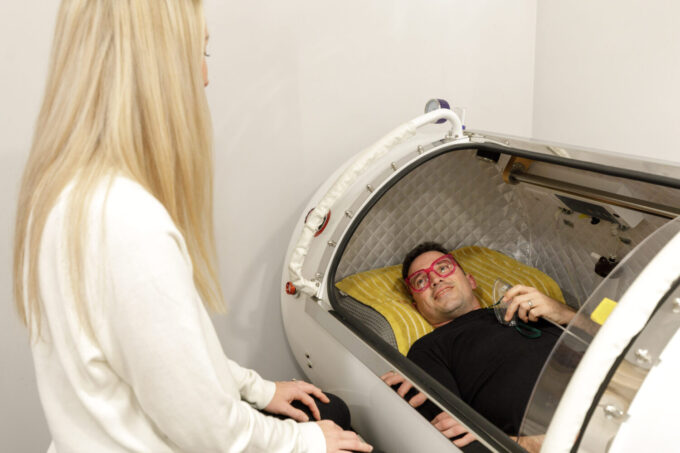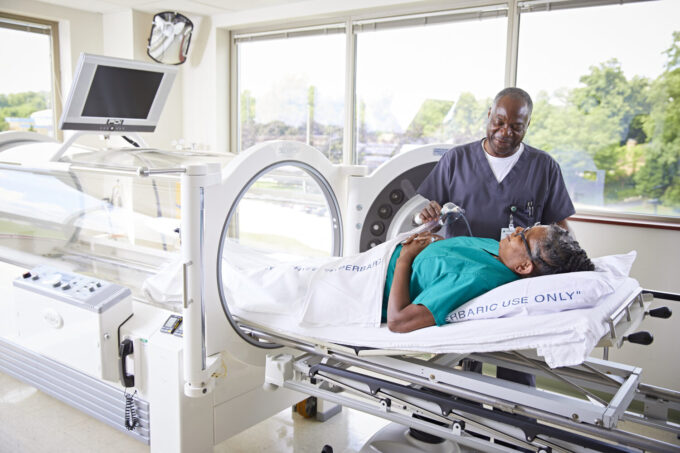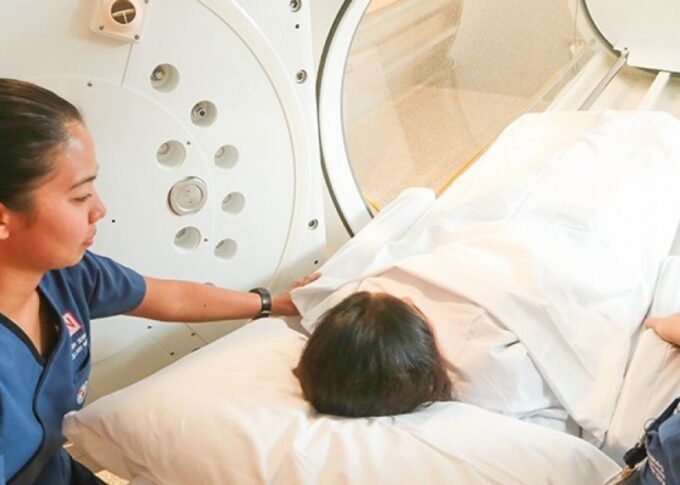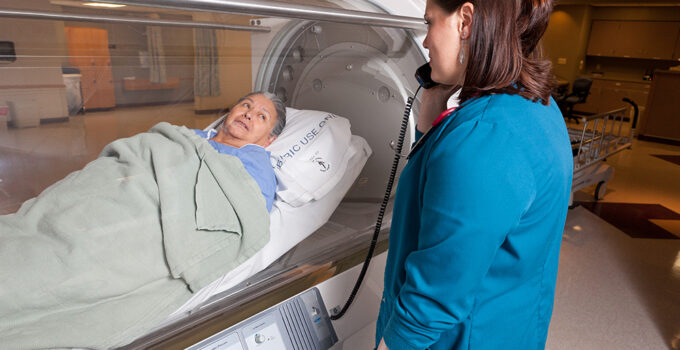Hyperbaric therapy, also known as hyperbaric oxygen therapy (HBOT), is a medical treatment that involves breathing pure oxygen in a pressurized chamber or environment. This therapy has gained popularity in recent years due to its potential health benefits. The primary aim of hyperbaric therapy is to increase the level of oxygen in the body’s tissues, which can promote healing and improve various medical conditions.
The Science Behind Hyperbaric Therapy
Hyperbaric therapy works on a simple yet profound principle: the increased pressure allows your body to absorb more oxygen. When you enter a pressurized chamber, the air pressure is elevated to levels greater than atmospheric pressure. This higher pressure forces more oxygen into your bloodstream, effectively increasing the oxygen supply to all parts of your body. Oxygen is a vital element for cellular function and plays a crucial role in the healing process.
Conditions Treated with Hyperbaric Therapy

Source: vivianstreetosteopaths.co.nz
Hyperbaric therapy can be used to treat a wide range of medical conditions. Some of the common conditions that can benefit from this treatment include:
Wound Healing: Hyperbaric treatment can accelerate the healing of stubborn wounds, including diabetic ulcers and non-healing surgical wounds.
Carbon Monoxide Poisoning: Inhaling carbon monoxide can lead to severe health issues. Hyperbaric therapy helps to remove carbon monoxide from the body more quickly.
Radiation Injury: Patients who have undergone radiation treatment for cancer may experience tissue damage. Pressurized therapy can aid in the healing of radiation-induced injuries.
Decompression Sickness: Scuba divers and submarines who experience decompression sickness can find relief through hyperbaric treatment.
Infections: Certain bacterial infections respond well to increased oxygen levels, making pressurized therapy a valuable adjunct treatment.
Benefits of Regular Hyperbaric Sessions
Hyperbaric oxygen therapy benefits are numerous. Firstly, it enhances the body’s natural healing processes by delivering a higher concentration of oxygen to damaged tissues. This, in turn, can reduce inflammation and promote tissue repair. Additionally, regular pressurized sessions may boost the immune system, improve blood circulation, and alleviate pain in certain cases.
How Often Should You Consider Hyperbaric Therapy?
The frequency of hyperbaric therapy sessions can vary based on individual needs and medical conditions. It is essential to consult with a healthcare provider who specializes in hyperbaric medicine to determine the most suitable treatment plan. Factors influencing the frequency of sessions include the type and severity of the condition, the patient’s overall health, and the treatment goals.
Consultation with a Medical Professional

Source: news.christianacare.org
Before embarking on a hyperbaric therapy journey, it is crucial to consult with a qualified medical professional. They can evaluate your specific health concerns, assess whether pressurized treatment is a suitable option, and recommend an appropriate treatment plan. This consultation ensures that the therapy aligns with your medical history and current health status, optimizing its effectiveness.
Frequency Guidelines for Specific Conditions
While the frequency of hyperbaric therapy sessions can vary, here are some general guidelines for specific conditions:
Wound Healing: Patients with non-healing wounds may require daily or every-other-day sessions initially, which can taper off as the wound improves.
Carbon Monoxide Poisoning: A single pressurized session may be sufficient for mild cases, while severe cases may require multiple sessions over several days.
Radiation Injury: Typically, patients undergo 20 to 30 sessions over a few weeks to address radiation-induced tissue damage.
Decompression Sickness: Treatment for decompression sickness often involves multiple sessions over several days, with the number of sessions based on the severity of symptoms.
Possible Side Effects and Safety Measures
Hyperbaric treatment is generally considered safe when administered by trained professionals in a controlled environment. However, some individuals may experience minor side effects, such as ear discomfort or sinus pain, which usually resolve after the session. To enhance safety:
Patients should inform their healthcare provider of any pre-existing medical conditions or medications.
The pressurized chamber should meet safety standards and be well-maintained.
Proper ear clearing techniques should be employed to prevent barotrauma.
Duration of Each Hyperbaric Session

Source: stlukes.com.ph
The duration of a hyperbaric session typically ranges from 60 to 120 minutes, but it can vary based on your unique circumstances. As you relax inside the pressurized chamber, you’ll be breathing in pure oxygen, a process that’s both comfortable and non-invasive. However, it’s important to note that the exact duration and pressure levels are not arbitrary; they are meticulously determined by your healthcare provider. They will carefully evaluate your specific condition and treatment plan, tailoring the session length and pressure to ensure maximum effectiveness.
Monitoring Progress and Adjusting Frequency
During your hyperbaric therapy journey, active communication with your healthcare team is key. Regular follow-up appointments serve as crucial checkpoints, allowing medical professionals to closely monitor your progress. By assessing your response to treatment and any changes in your condition, they can make necessary adjustments to the frequency and duration of your sessions. This personalized approach ensures that your pressurized therapy plan evolves along with your needs, optimizing its effectiveness and your overall well-being.
Cost Considerations
Understanding the cost implications of hyperbaric therapy is essential for informed decision-making. The financial aspect of this treatment can fluctuate significantly based on several factors, including your location and the facility you choose. Moreover, insurance coverage plays a pivotal role. It’s worth noting that while some insurance plans may cover hyperbaric therapy for specific medical conditions, others may not. To gain clarity on your coverage options and potential out-of-pocket expenses, it’s advisable to proactively engage with your insurance provider. This step ensures that you are financially prepared for your pressurized treatment journey and can make the most of its benefits without any unexpected financial burdens.
Conclusion: Making Informed Decisions
In conclusion, hyperbaric therapy offers a promising avenue for the treatment of various medical conditions. Understanding the science behind it, consulting with a medical professional, and following recommended frequency guidelines are essential steps in reaping the potential benefits of this therapy.
Remember that hyperbaric treatment is not a one-size-fits-all solution, and its effectiveness can vary from person to person. Making informed decisions based on your specific health needs and guidance from healthcare professionals is crucial to maximizing the benefits of pressurized therapy. Whether you’re seeking wound healing, relief from carbon monoxide poisoning, or aid in managing other medical conditions, a well-informed approach is your path to better health through hyperbaric therapy.







